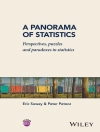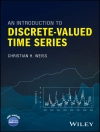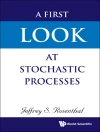Peruse the history of survey research and the essential conceptsfor data quality. With an emphasis on total survey error, theauthors review principles and concepts in the field and examineimportant unresolved issues in survey methods. Spanning a range oftopics dealing with the quality of data collected through thesurvey process, they focus on such key issues as:
* Major sources of survey error, examining the origins of eacherror source most successful methods for reducing errors from thosesources
* Methods most often used in practice for evaluating the effectsof the source on total survey error
* Implications of improving survey quality for organizationalmanagement and costs
表中的内容
Preface.
Chapter 1. The Evolution of Survey Process Quality.
1.1 The Concept of a Survey.
1.2 Types of Surveys.
1.3 Brief History of Survey Methodology.
1.4 The Quality Revolution.
1.5 Definitions of Quality and Quality in Statistical Organizations.
1.6 Measuring Quality.
1.7 Improving Quality.
1.8 Quality in a Nutshell.
Chapter 2. The Survey Process and Data Quality.
2.1 Overview of the Survey Process.
2.2 Data Quality and Total Survey Error.
2.3 Decomposing Nonsampling Error into Its Component Parts.
2.4 Gauging the Magnitude of Total Survey Error.
2.5 Mean Squared Error.
2.6 An Illustration of the Concepts.
Chapter 3. Coverage and Nonresponse Error.
3.1 Coverage Error.
3.2 Measures of Coverage Bias.
3.3 Reducing Coverage Bias.
3.4 Unit Nonresponse Error.
3.5 Calculating Response Rates.
3.6 Reducing Nonresponse Bias.
Chapter 4. The Measurement Process and Its Implications for Questionnaire Design.
4.1Components of Measurement Error.
4.2 Errors Arising from the Questionnaire Design.
4.3 Understanding the Response Process.
Chapter 5. Errors Due to Interviewers and Interviewing.
5.1 Role of the Interviewer.
5.2 Interviewer Variability.
5.3 Design Factors that Influence Interviewer Effects.
5.4 Evaluation of Interviewer Performance.
Chapter 6. Data Collection Modes and Associated Errors.
6.1 Modes of Data Collection.
6.2 Decision Regarding Mode.
6.3 Some Examples of Mode Effects.
Chapter 7. Data Processing: Errors and Their Control.
7.1 Overview of Data Processing Steps.
7.2 Nature of Data Processing Error.
7.3 Data Capture Errors.
7.4 Post-Data Capture Editing.
7.5 Coding.
7.6 File Preparation.
7.7 Applications of Continuous Quality Improvement: The Case of Coding.
7.8 Integration Activities.
Chapter 8. Overview of Survey Error Evaluation Methods.
8.1 Purposes of Survey Error Evaluation.
8.2 Evaluation Methods for Designing and Pretesting Surveys.
8.3 Methods for Monitoring and Controlling Data Quality.
8.4 Postsurvey Evaluations.
8.5 Summary of Evaluation Methods.
Chapter 9. Sampling Error.
9.1 Brief History of Sampling.
9.2 Nonrandom Sampling Methods.
9.3 Simple Random Sampling.
9.4 Statistical Inference in the Presence of Nonsampling Errors.
9.5 Other Methods of Random Sampling.
9.6 Concluding Remarks.
Chapter 10.1 Practical Survey Design for Minimizing Total Survey Error.
10.1 Balance Between Cost, Survey Error, and Other Quality Features.
10.2 Planning a Survey for Optimal Quality.
10.3 Documenting Survey Quality.
10.4 Organizational Issues Related to Survey Quality.
References.
Index.
关于作者
PAUL P. BIEMER, Ph D, is a distinguished Fellow at RTIInternational, and Assistant Director for Survey Research at the Odum Institute for Research in Social Science at the University of North Carolina at Chapel Hill.
LARS E. LYBERG, Ph D, is Chief Scientist at Statistics Sweden. They both have co-edited, with others, Measurement Errorsin Surveys, Survey Measurement and Process Quality, and Telephone Survey Methodology (all published by Wiley).












